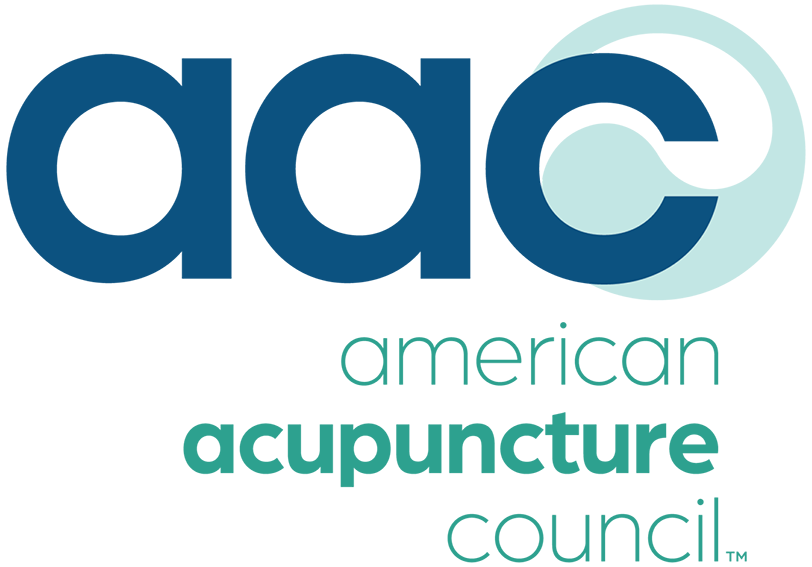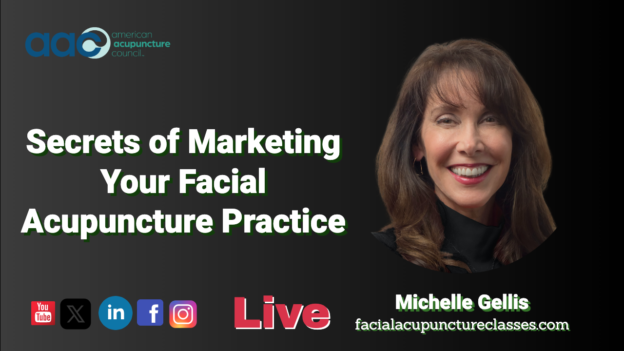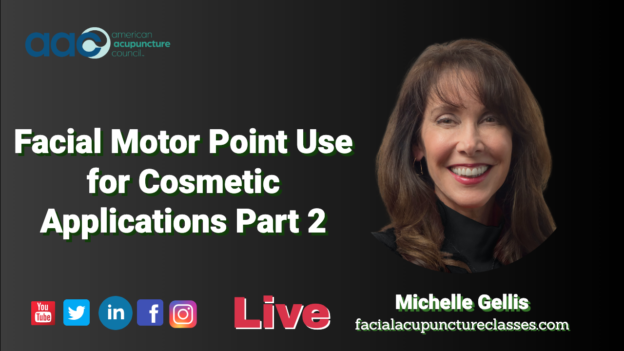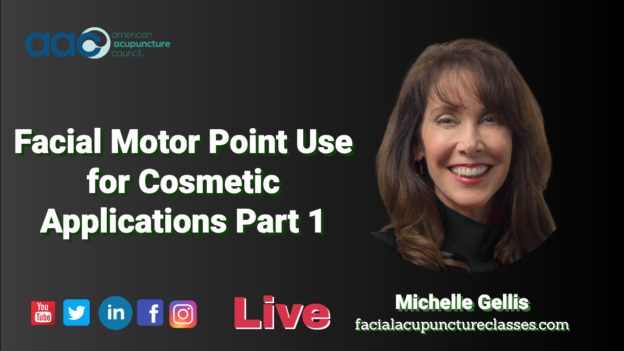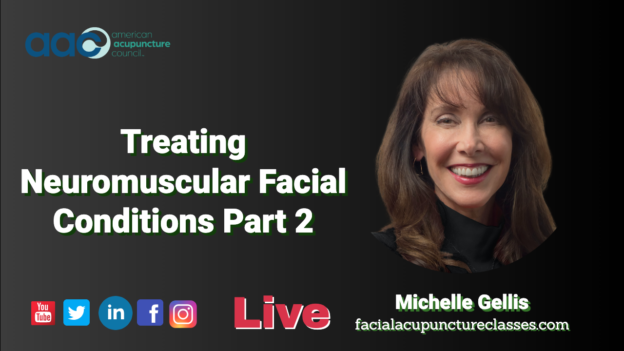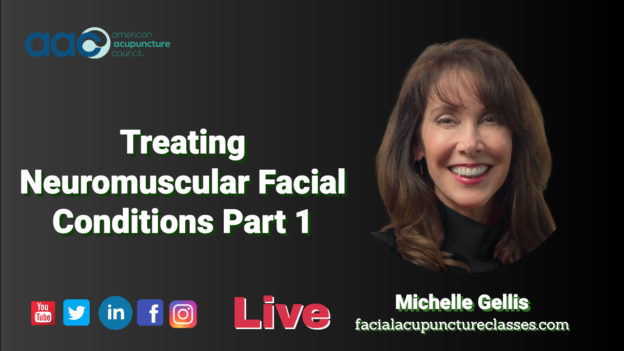So today’s lecture is going to be part one of a comprehensive lecture on how to market your facial acupuncture practice. And part of this is from my upcoming book on Treating the Face and some of the material I learned from Dr. East Phillips and she can be found@dreast.com.
Click here to download the transcript.
Disclaimer: The following is an actual transcript. We do our best to make sure the transcript is as accurate as possible, however, it may contain spelling or grammatical errors. Due to the unique language of acupuncture, there will be errors, so we suggest you watch the video while reading the transcript.
Hi, my name’s Michelle Gellis.
And I am a License Board Certified Acupuncture Physician. I will be presenting today on Marketing Your Facial Acupuncture Practice. Can we go to the first slide?
So a little bit about me. I am currently on the doctoral faculty at Yosan University, and I am a former faculty member and clinic supervisor at the Maryland University of Integrative Health. I have been teaching facial and cosmetic acupuncture classes since 2005.
Click here for the best Acupuncture Malpractice Insurance
So today’s lecture is going to be part one of a comprehensive lecture on how to market your facial acupuncture practice. And part of this is from my upcoming book on Treating the Face and some of the material I learned from Dr. East Phillips and she can be found@dreast.com. So the topics today are I’m going to do a quick marketing 101, talk about social media, the power of testimonials the importance of before and after photos, and how to set up some accounts.
programs for your facial acupuncture practice. So the first thing to think about when you’re thinking about marketing your facial acupuncture practice, and this really is not just for a cosmetic acupuncture practice, but this can also be for if you’re doing facial acupuncture for, Neuromuscular facial conditions.
Get a Quick Quote and See What You Can Save
It really falls under the umbrella of educating your audience. When most people now, nowadays, when they think about aging, there’s more of a push towards holistic aging, and aging in a healthy way. We can’t stop the aging process, but we all want to look and feel as good as possible. And the nice thing about acupuncture and Chinese medicine is that we’re not just treating the outside, we’re treating the inside.
So when you are Putting together your brochures or your online presence, any infographics that you’re putting together to talk about your facial acupuncture practice. You want to not only talk about how effective it is, but also The full range of benefits as far as physical health, emotional health and wellness, relaxation, and how it is a holistic approach, you’re not putting anything into the body or taking anything out of the body, as is frequently the case with Western medicine.
When we’re thinking about our marketing in general, one of the first things that we can be struck with is where do I come up with content? How often do I need to post? How much information does someone want at one time? And for a lot of us, we are healers, we are business owners, but we may not have a marketing department and or a background in marketing.
It’s important to know that consistency is the key. It takes the average person about seven times of seeing your ad before they actually take some sort of action. If you’re consistent, then people know that you’re not going to disappear. They can count on you to be there. And if they can’t buy right in that moment, then They’ll see your post again.
So it really is a matter of being in front of someone often enough so that when the time is right for them, they’ve been educated, they like you, get your message, they understand what you’re selling, and that’s when they’re going to hit the button to either call you or to sign up and make an appointment.
So marketing when you’re trying to think of marketing ideas, it can be overwhelming. Like I am just burnt out, I can’t think of a single other idea of what can I do for my marketing. So one idea is to market by the season, right? So each season you are going to come up with a new idea for marketing. So when we’re talking about the skin, maybe it’s a spring detox for the skin or summer skin.
Is your skin getting. Overcooked by the sun or dried out or is the humidity affecting your skin? Is your skin dry in the fall? And what about your winter skin? How is your, how are you tending to your skin during the winter? So you can set your marketing. by the season. Another way that you can set your marketing is holidays.
There’s so many holidays and for each holiday you can work your marketing around that holiday. Also every month of the year, and sometimes for every week of the month, there’s different awareness. So there’s Domestic Violence Awareness Month and Down Syndrome Awareness Month, Breast Cancer Awareness Month.
Different awareness things that resonate with you, your message. You can look them all up and then you can gear your marketing towards that and offer specials geared towards that.
You can also do your marketing so if you choose a month, or you’re in a month, you’re coming up on a month, let’s say January, you would come up with different discount codes that would relate to January. And then when you’re offering discounts on your services or your products, I strongly recommend if you’re going to be offering cosmetic acupuncture, that you do offer products.
So For example, for January, you could do New Year, or New You, or Beginnings, or New Beginnings, and then that discount code would be worth a certain amount of money. And within the month of January, you can also offer different challenges. This can be on your social media, where you offer a challenge for your patients to to have different activities related to their skin, whether it’s derma rolling or cupping and gua sha at home, or a product maybe that you’re launching.
You could offer a flash sale during the month that only happen during certain times, like if it’s snowing or if the temperature goes below a certain temperature. So this is another way that you can. Set your marketing and come up with different marketing ideas. You can also do it by days of the week.
Motivational Monday, Therapeutic Thursday, Feedback Friday. For example, on Therapeutic Thursday, you would have a discount or a promotion or something related to a specific topic. service that you offer. Maybe it’s red light therapy and Feedback Friday. You can invite people to provide feedback on, the experiences that they’ve had and people love to write and comment.
This also boosts your rankings on social media because the more traffic there is in your website or on your social media, the higher you’re going to rank. And it will also give you an opportunity to gather up testimonials. Something else that is wonderful for your to promote, help to promote your business, to drive people to your website and learn more about you and your practice is to develop a QR code.
And this is actually, Very easy. If your phone is near you right now, you can pick up your phone and scan that QR code and see where it brings you. But a QR code can easily be generated for free if you have Canva. You within Canva there is a QR code generator and Adobe also has a QR code generator.
And then there are a lot of programs and apps that will generate QR codes and you can even, at the bottom, You can even have a, like a little title, the name of your business, so people know when they’re scanning what they’re scanning.
As far as your social media I strongly recommend that you have a presence everywhere. I know a lot of my students say they left Facebook during the pandemic or they just got tired of being on Facebook. However, a lot of your customers, your patients are going to be 45 to 65 and they are on Facebook.
So if you don’t have a presence on Facebook for your business, you really should. And when you design your social media, you don’t want it to always be. the same thing. So it’s good to rotate between something a little more personal because people will like and follow people that they like. So if you make them laugh if they resonate with your message, then they are going, if you’re genuine and authentic people.
are really looking to connect with people that they can relate to on their social media. And so you can have something personal, not too personal. I strongly discourage my students, anyone from complaining on social media. Way back when Facebook was first created if you remember, there was only a like.
So it was really about making people happy. And if you’re complaining, no one, people have enough problems. They don’t want your problems. Keep it personal, not too personal. Educational, teach people something in a short bite within 15 seconds. 30 seconds max. Entertaining is great if you can make people laugh or if you have a skill or a talent and you want to show it to them.
Again, this goes into the personal. Something sales related. It’s okay to promote something that you’re doing. And This is a great place for your before and afters, your testimonials. Always have the closed captions because most people don’t have their sound on their phone when they’re scrolling on their social media.
And then everything that you post on social media has got to link back to your website. Because otherwise people will look at it. They don’t know how to find you. And I actually don’t have my social media on here, but you can find me at facialacupunctureclasses. com. So let’s talk about Instagram and this lecture is part of a much bigger lecture that I do in my masterclass on on marketing and I have my students do exercises and we really go into depth.
We do a deep dive on all of these, but like we’re just going to get some really good ideas now. So for Instagram, you, there is no way for someone to click on a link directly through your Instagram posts. So with Instagram, you have to open up. Linktree account. And in your Linktree account is where you can put links to your websites, your products, anywhere you want to direct your patients.
And that goes up in your bio. And then with your, in your post, you say, go to the link in my bio, and they can click on that. And that will take them to where you want them to go. Stories tend to be seen a lot more than posts, which are just stagnant pictures or reels, because someone has to actually go on to your profile to see that reel, whereas stories get shown.
So I always encourage to, if you’re making a reel, you can also redo it as a story. So having them in both places and having the stories more often. We don’t have time to get into how to make a reel, but reels are a great way to do something that’s a little longer than a story and to really present your message.
Facebook. I like Facebook because in Facebook you can have a conversation. So you can have videos, you can make reels reels. And you can also have direct links to your website, but you can really have conversations with people for better or for worse in Facebook. And it’s a lot more participatory.
There’s a lot of different ways to do you can have a poll where you ask people questions and you can have your personal Facebook and your business Facebook. And for my facial acupuncture classes, I have a group. With over I think we’re at 8, 000 acupuncturists in my Facebook group and it’s called Facial Acupuncture.
And people can ask questions and the nice thing about groups is whenever someone posts something in a group, everyone in the group is going to see it. Whereas posts, you have, they have to be light in order for people to see them. Whenever you’re doing Facebook posts, always have links to your website in there.
TikTok is a little different. You might not think about TikTok for your social media, but a lot of people are using it now. And you just make short, little, videos, you can show something that you’re doing or even something that you have on special. But again, if you make one video, then you can take that same video and show it on your YouTube channel, on your Facebook, on your LinkedIn.
You could just show it across all of your platforms. And the nice thing about TikTok is. It has a huge repertoire of music and the editing is really good within TikTok. And you can also do these things called duets. So you can find like an expert in our field and if they’re doing something like, let’s say I was.
presenting a technique and I allowed for duets in my TikTok video, you could put that up and you don’t even have to make the video. You could just be sitting there pointing to it or commenting on it and you have instant content.
Testimonials you have to check with your the state or area where you’re practicing, not All places allow testimonials. I know they don’t allow them in Canada. But if you’re practicing in a place where you allow them, they are great to have on your website. They’re great to have in your social media and in your waiting room.
If you have a book of articles and information for people to look at. And sometimes people just want to take a break from their phone when they’re sitting and they’re waiting to see you. And if you have a book with letters from patients and testimonials, some before and after pictures, this is wonderful.
But just make certain you have permission and you want to keep the testimonial very specific. What exactly was it that did that person like about the treatment? Did their eyebrows become more raised or their crow’s feet became reduced? If you can get your patients to speak to that, and especially if you have a picture, then that is wonderful.
When you’re taking before and after pictures I always take before pictures. I don’t always remember to take the afters, but it’s great if you can get them. But the important thing, because there’s so much photoshopping going on now, they’re not as credible as they were 20 years ago, but When you’re taking your before and afters, you have to make sure that they’re in a HIPAA compliant app and that the lighting is the same for the before and the after.
So if you’re Treatment spaces, windows, close the curtains. And you have to make sure you’re at the same distance and angle. I always have my patient sit on my treatment table, and if they’re taller, I will raise the camera up so that It’s always at that same angle. And the last thing I’m going to talk about today are programs.
And again, this is a state by state thing. Not every place allows you to sell a program or a package is probably the more common term. But what You can do in many places, you can set up like this is my standard program. With the standard program for this much money you get 12 treatments and Dermaroller for self care.
And then for the silver treatment you get everything in the standard treatment Plus, you get products to use with the roller. And then, you can go a step further, and then the gold treatment. This is everything in the silver, plus red light, etc., etc. And then, You would say to your patient which program interests you, and you can even have a little arrow.
This is our most popular program. And people like to be given choices, not too many choices. And they’re going to choose whichever is in their budget and whichever kind of resonates with them. That is the end of Part 1. And next time in part two of Marketing Your Facial Acupuncture Practice, we are going to talk about direct mailing either through email or through actual mail, and blog posts, community engagement, workshops, and collaborations.
So I look forward to seeing you in part two and thank you for coming today.





